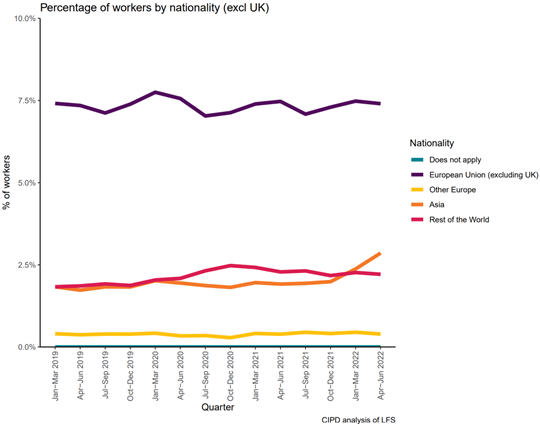The workforce is smaller by about 230k people since before the pandemic (February 2020)
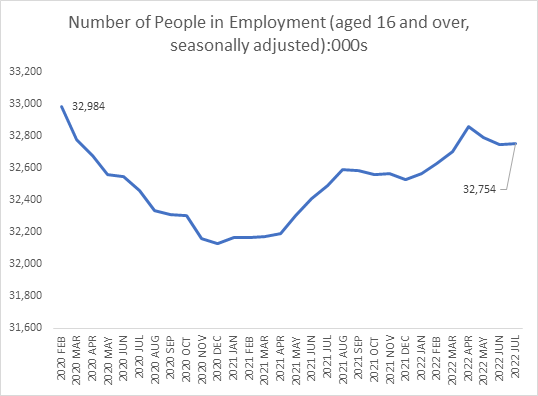
The real problem is the imbalance between the demand for labour and the supply. Demand for labour remains near record high levels as evidenced by the high number of job vacancies currently being advertised. The supply of workers is restricted for a few reasons. The unemployment rate – at 3.5% - is the lowest for 50 years. To be unemployed someone must be seeking and available to work. If unemployment is low, and employment remains lower than pre-pandemic then there must be a third place that workers have moved to. That place is called inactivity and it includes students, retirees, and the long-term sick.
Looking at the change in numbers for these inactive categories since the beginning of the pandemic, it is clear that students increased. This was perhaps a sensible strategy when job opportunities were lower during the pandemic. The more worrying trend is the increasing numbers of long-term sick. This could be a combination of long Covid, NHS waiting lists, and perhaps demographics too as the population is ageing.
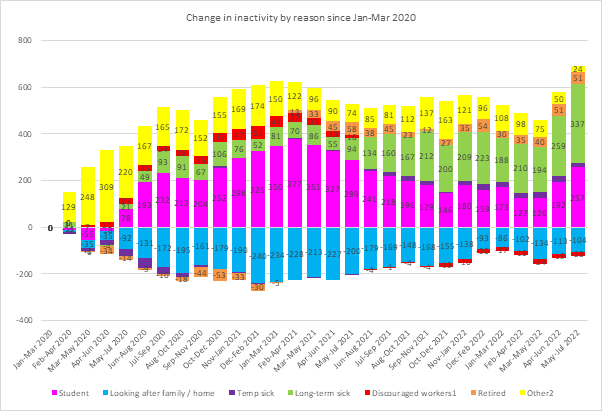
Another way of cutting the inactive group is to look at those who say they would like a job vs those who say they do not want to work. The entire increase in inactivity can be attributed to those not wanting to work. This means that efforts to reverse the trend will be working against a gradient.
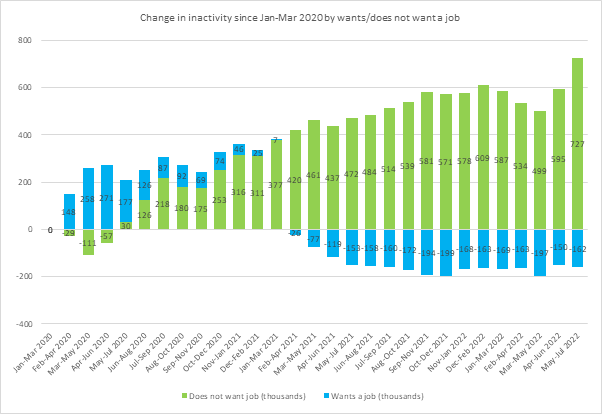
What’s the role of immigration?
Due to problems collecting data during the pandemic, it has been difficult to know the effect of immigration on the workforce. EU nationals remain the largest group (outside of UK nationals) in the labour market but nationals of Asian countries are rising as a proportion of the workforce.
Looking at a breakdown by industry, pre and post-pandemic, some sectors are much more reliant on foreign nationals than others. The hospitality sector (accommodation and food services) has gone from 15% EU national to 10.3% when comparing pre and post-pandemic quarters.
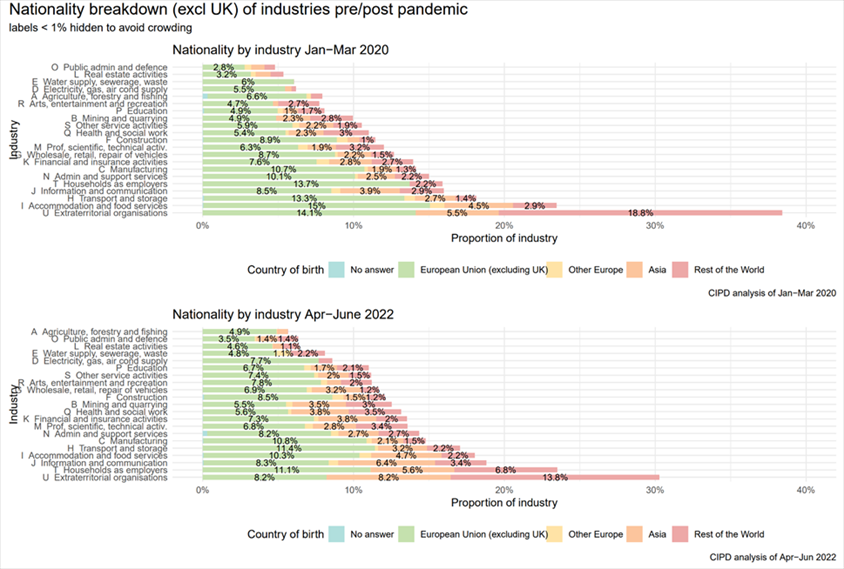
What can be done?
Employers can focus on job quality to entice people back. The CIPD’s labour market outlook shows that employers are increasingly responding to recruitment and retention difficulties with things such as advertising more jobs as flexible (35%).
The UK clearly has a problem with long-term sickness and employers and policymakers need to take this more seriously. Significantly improving access to occupational health services for workers and advice and support for employers on occupational health issues affecting staff could have a big impact over time. The provision of timely access to occupational health services to workers in their 20s and 30s who suffer from back pain or other musculoskeletal problems would mean that steps can be taken to reduce the likelihood of these conditions becoming chronic, affecting people’s health and their ability to work.
On immigration, expanding the shortage occupation list could further boost the labour supply.
A final observation
Today there is an imperative to boost labour supply as it is acting as a constraint on growth. This may not be the case tomorrow. If the UK enters a downturn and unemployment increases as most forecasts expect to happen, the demand for labour will reduce and the effect of acute shortages currently experienced will lessen. However, longer term, creating good quality work that caters to a wide variety of peoples’ preferences and needs will make UK employers more resilient.




